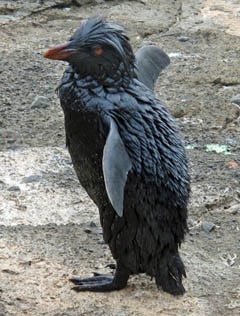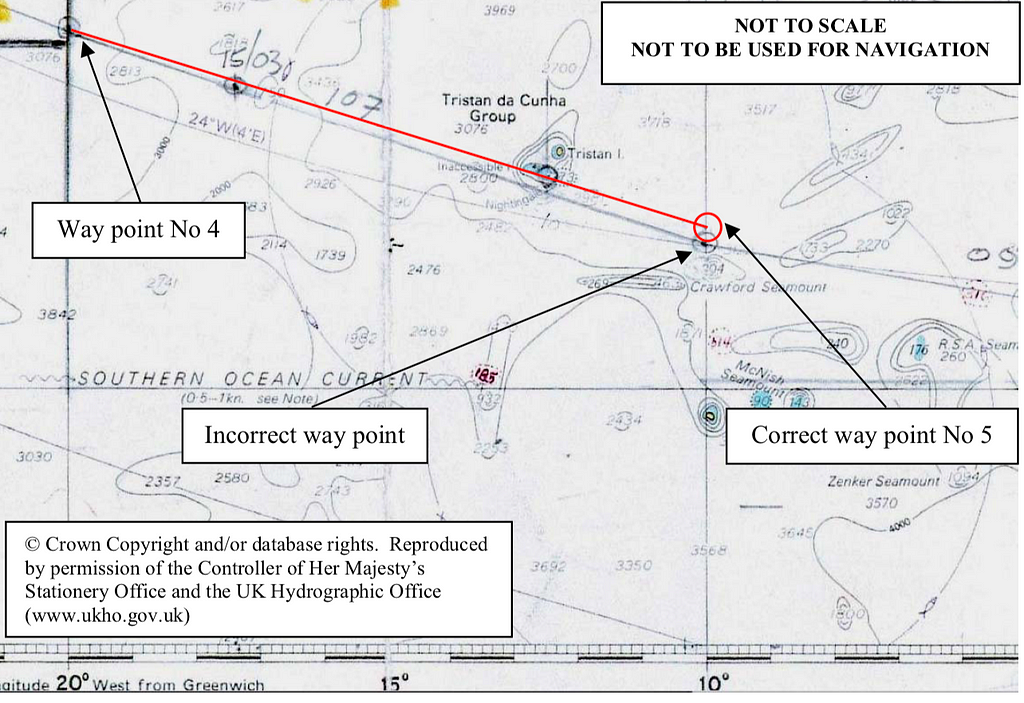How a small mistake in chart plotting can lead to a disaster
This series highlights recent maritime accidents, detail their causes and highlight how intelligent systems could help prevent future incidents.
It is inspired by the fact that when I co-founded Shone, I learnt that most accidents happen due to human errors. Actually studies show that a staggering 96% of accidents are caused by human error.
Without further ado, let’s dive into our first case study: the MS Oliva.
The grounding of the MS Oliva

What happened
The MS Oliva — a 225m (738ft) dry bulk carrier transporting soya beans — ran aground at 14 knots at 4:30am on 16th March 2011 at the far north-west promontory of Nightingale Island, a small volcanic island in the middle of the Atlantic. The weather conditions worsened over time and a heavy swell started developing. The swell became so bad that on March 18th, the ship broke in two. The stern section then capsized and sank while the forward section drifted away.

Overall, it released the 1,500 tons of fuel it carried in the water, smothering thousands of northern rockhopper penguins. An additional environmental issue is the release of the ship’s cargo (60,000 tons of soya beans) in the water, reducing sealife around the shipwreck.
All 22 crewmen on board the Oliva were safely rescued by a fishing vessel and a cruise ship nearby.
How did this happen
A selection of the most interesting conclusions of the subsequent investigation offers great insights into the cause of this accident:
- Oliva ran aground because the planned course on the plotting sheet was taking the vessel directly over Nightingale Island.
- Appropriate charts covering the area had not been used.
- Both the second mate and chief mate were not aware that the vessel was heading towards Nightingale Island. This was because there was no indication on the plotting chart to alert them of the dangers ahead.
- Both the second mate and chief mate saw some echoes on the radar screen, but did not investigate them and dismissed them as rain clouds.
- The chief mate was probably not fit to stand a navigational watch due his illness, medication and fatigue.
The full report is available for the interested readers.

Detailing a little on point #1, it appears that the second mate made an error when plotting one of the ship’s waypoints, which resulted in his belief that the ship would clear the group of islands by 10 nautical miles. In fact, had he plotted the correct waypoint he would have realized that the course went directly over one of the islands.
In addition, the crew’s dismissal of large radar echoes as rain clouds led them not to consult a detailed chart of the area.
This should not have happened
The first thing that comes to mind is that this happened in 2011! At a time where anyone could use Google Maps on their iPhone 4S to avoid traffic jams or find the nearest bike route to work!
It is a striking example of the resistance to change in the maritime industry that leads to delay in adoption of new technologies. For instance, the IMO’s plan to make Electronic Chart Display (ECDIS) mandatory followed a phased rollout and it is only next month (July 2018) that ECDIS will be mandatory for all vessels over 10,000 gross tonnage.
Technology can prevent such accidents
Arguably, the use of an ECDIS would have helped in this case:
- the planned route would most likely have triggered an alert that it was passing too close to the islands;
- the officer of the watch would probably have seen the islands overlaid with the radar echoes and therefore not dismissed them as clouds.
Beyond ECDIS
An ECDIS however is not a perfect solution. The superposition of data sources (chart, AIS, radar) can lead to an information overload as it is up to the officer to fuse this information and make an informed navigation decision.
On top of this, there are multiple other shortcomings to an ECDIS. In particular, the fact that a lookout and an officer still have to actively be alert 24/7 to navigate the ship does not make sense. An autonomous system would have detected that the route crossed the Nightingale Island, and re-routed the ship to avoid it miles before it even got into a dangerous situation! This would have happened while allowing officers to get sufficient rest and focus on their high value tasks.
Learn more about Shone and the future of shipping!
You have a suggestion for an interesting accident that happened recently? Submit it in the comment section!
Maritime accidents: The grounding of MS Oliva was originally published in Shone Blog on Medium, where people are continuing the conversation by highlighting and responding to this story.